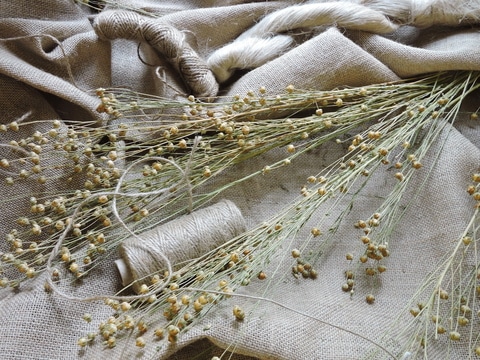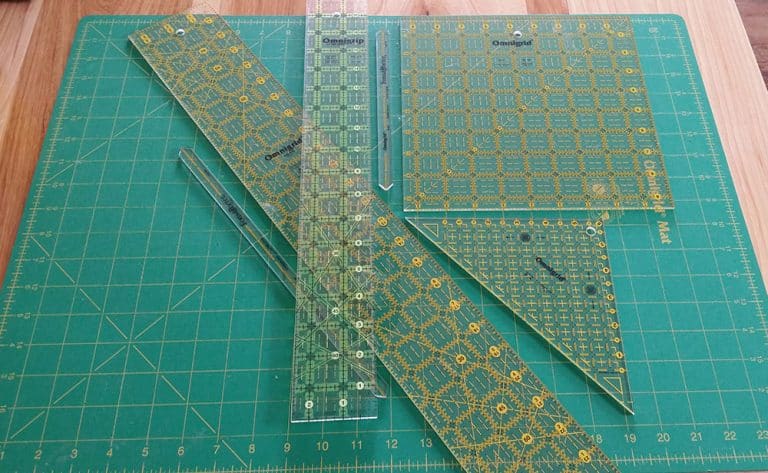Does Linen Shrink? Uncover the Startling Truth Now!
Yes, linen can shrink when washed improperly. According to several sources, including The Creative Folk, Parachute Home, Sewing Hackers, and Elkie & Ark, linen fabric can shrink during its first wash due to relaxation shrinkage.
On average, linen shrinks around 3% to 4%, but in some cases, it can shrink up to 10% after washing. To prevent excessive shrinkage, I recommend that you wash linen in lukewarm water and avoid drying it at high temperatures.

Table of Contents
Does linen shrink in the dryer?
Yes, linen can shrink in the dryer. According to several sources, including House Grail, and Parachute Home, linen fabric can shrink up to 5% in the dryer. To avoid excessive shrinkage, either line dry or tumble dry on low heat.
Let me tell you about my experience! I made a linen jacket but I hadn’t pre-washed it. What a mistake! I got makeup on the collar and thought I could give it a quick wash before a date. What came out of the dryer would only fit an 18-inch doll. I learned my lesson. ALWAYS pre-wash linen BEFORE sewing your item.

Why does linen shrink?

Linen is a natural fiber made from the flax plant and is known for its strength, durability, and breathability. As a natural fiber, linen is also prone to shrinkage when washed.
This is due to the natural fibers in the fabric becoming shorter and more compact when they come in contact with water.
Shrinkage can also be caused by incorrect launderings, such as using too hot of water or drying it on a high heat setting.
To avoid shrinkage, use cold water and line-dry the fabric.
Additionally, use a gentle cycle on the washing machine, and avoid using fabric softeners or bleach.
How to wash linen

To wash linen, it should be pre-washed to prevent shrinkage of the fabric. Here are my recommendations:
- Fill a small tub or sink with cold water and add a mild laundry detergent.
- Swish the garment lightly in the water, taking care not to twist, wring, or stretch the fabric. When you’re ready to rinse the garment, drain the tub and refill it with cold, clean water.
- Use cool water and mild detergent to pre-wash the linen on the gentle cycle. Let the linen soak for about five minutes, then gently agitate it by swishing it around with your hand.
- Lift the linen and lightly squeeze out any excess water to prevent stretching. Refill the bucket with cool, clean water and swish the linen around.
- Wash linen in cold water with a mild detergent. Rinse thoroughly and avoid wringing or twisting the fabric. Hang or lay flat to dry.
- This is one of my favorite tricks: Use natural stain soaps if needed and cover red wine stains with sugar or salt instantly to avoid permanent staining ( I keep Morton’s Salt in the laundry room). I had a family dinner where a guest knocked over a full glass of wine and people mopped up the red wine with their white napkins. I simply filled the washing machine with water and a lot of salt, and let the linens soak overnight. In the morning, all were sparkling white napkins again and didn’t need any further pretreatment. MAGIC!
- For stubborn stains, drip lemon juice on a fresh stain, sprinkle salt on top to draw out the stain, then leave the linen in the sun for several hours before washing.

I recommend that you always check the care label on your linen garment for specific washing instructions.
How to care for linen fabric
Caring for linen fabric is not that difficult if you follow these simple guidelines:
- Wash linen in low temperatures in lukewarm or cold water, preferably soft. Use the gentle machine cycle and mild detergent to protect the fibers. Avoid using bleach or fabric softeners.
- Iron linen when it is still damp. This process will help the linen to become softer.
- Avoid drying linen on high heat, as it can cause the fabric to shrink and become brittle. Instead, hang or lay flat to dry in a well-ventilated area.
- Store linen in a cool, dry place to prevent mildew and discoloration. Avoid storing linen in plastic bags or containers, as this can trap moisture and lead to musty odors. (source: Real Simple)
Again, always check the care label on your linen fabric for specific care instructions and your household and clothing items will always look great.
How is linen fabric produced?

Flax is a plant whose fibers are used to create linen. These beautiful blue-purple blossoms are cultivated in the temperate parts of Northern Europe, which provide ideal circumstances for the growth of the flax plant, the source of fine linen. The practice of retting and sorting flax after it has been gathered dates back millennia. This guarantees the correct fibers are used in the linen yarn production process.
After the fibers are woven into the fabric, they can be used for garments, bedding, towels, and many other things. You can find a large selection of finished clothing and upholstered furnishings, or you can purchase linen fabric by the yard to build your own. Linen is a natural fabric, so it naturally features wrinkles and slubs that are part of the fabric’s charm.
What is the history of linen?
Linen is one of the oldest textiles in the world, with evidence of its use dating back to ancient Egypt over 4,000 years ago. The ancient Egyptians used linen for clothing, bedding, and even mummification. Linen was also used by the ancient Greeks and Romans, who valued its durability, strength, and coolness.
During the Middle Ages, linen production spread throughout Europe, with many countries developing their own distinctive styles and techniques. In the 16th and 17th centuries, linen became a luxury item, with fine linens being used by the wealthy for clothing and bedding.
In the 18th and 19th centuries, linen production became more mechanized, with the introduction of spinning machines and power looms. This led to an increase in the availability of linen and a decrease in its cost, making it more accessible to the general population.
Today, linen is still a popular textile, valued for its durability, breathability, and natural beauty. It is used in a wide range of products, including clothing, bedding, tablecloths, and upholstery.
One common concern when it comes to linen is whether it will shrink when washed. Many people wonder, “Does linen shrink when washed?”
Well, the answer is yes, linen has the potential to shrink. However, the amount of shrinkage can vary depending on various factors. So, how much does linen shrink exactly?
When it comes to washing linen, one might ask, “Does linen shrink in the wash?” It is possible for linen to shrink during the washing process.
Another question that arises is, “Does linen shrink in cold water?” The temperature of the water used for washing can have an impact on the amount of shrinkage. While cold water is generally gentler on fabrics, linen can still shrink to some extent even in cold water.
If you’re wondering, “Will linen shrink?” the answer is that it can indeed shrink. However, the degree of shrinkage will depend on the specific linen fabric and the washing conditions.
Some linens may shrink more than others, so it’s always a good idea to check the care instructions before washing.
Now, you might be curious, “Does linen shrink in wash or stretch?” While linen has the potential to shrink, it is important to note that it can also stretch.
The way in which linen is cared for, including the washing and drying methods used, can affect whether it shrinks or stretches.
So yes, linen can shrink when washed, and the amount of shrinkage can vary.
Whether linen shrinks or stretches depends on the specific fabric and the washing conditions. It is always advisable to follow the care instructions provided by the manufacturer to minimize the risk of excessive shrinkage.







